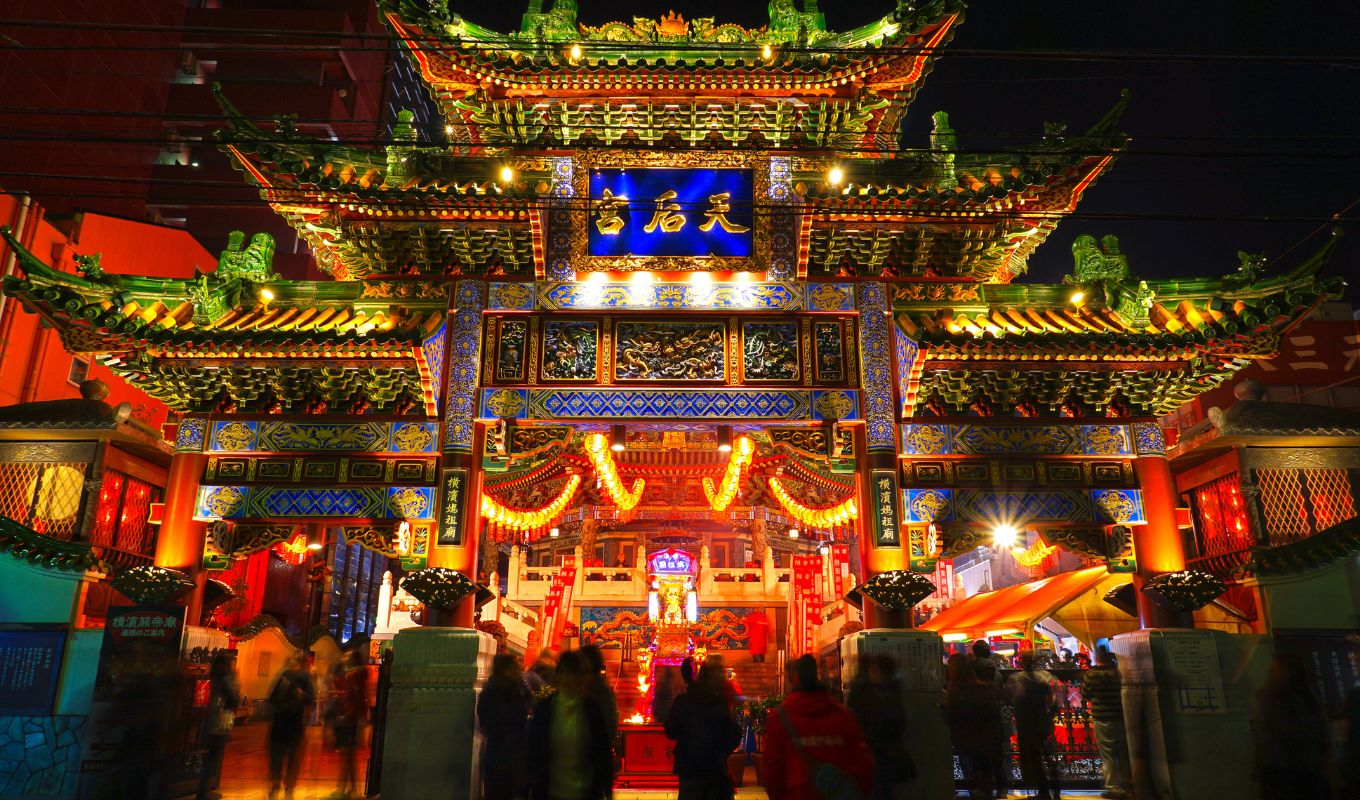Yokohama, is the first port city presented to the world as the gateway to Japan. From the moment its port was opened, Yokohama has been vigorously acquiring new cultures and information from foreign countries and presenting, for the first time to the nation, everything from food to a wide range of knowledge, which gives the right to be distinguished the place of origin of modern culture in Japan. The people of Yokohama, known as “Hamakko” in Japanese, have been very joyful enjoying life and willing to embrace what is good. Such a long-cultivated tradition of the ‘Hamakkos’ has been incorporated into today’s fashionable and sophisticated urban landscape.Yokohama is located on the western shore of Tokyo Bay, about 20 miles (32 km) to the southwest. Kawasaki’s main industrial city is located between the two great metropolises. Yokohama is located on a coastal plain enclosed by hills, one of which ends to the southeast at a promontory called Cape Hommoku.
Yokohama was just a small fishing village when, in 1854, Matthew C. Perry arrived with his fleet of American naval warships in the port of the neighboring city of Kanagawa. Five years later, Kanagawa was designated as Japan’s first port under the Harris Treaty (1858) where foreigners could reside and trade. However, Kanagawa was a major post station on Tōkaidō, Japan’s main east-west highway at the time, and the Japanese government did not want foreigners to have access to it. Instead, he established the port in Yokohama, which was isolated from the highway and had a deep-water port superior to Kanagawa.
The area flourished with the growth of foreign trade and shipments from Japan after the Meiji Restoration (1868), and in 1889, the city of Yokohama was established through the merger of Kanagawa and Yokohama. Basic municipal services (water, electricity and gas) were installed in the late 1880s. The city grew rapidly, becoming one of the main ports and commercial centers in the country.

In 1945, the bombing of the United States became more intense and the entire city of Yokohama was burned by repeated bombings. In particular, in the air raid on May 29, a total of 14,157 people died, were injured or disappeared; 79,017 houses were destroyed and 42 percent of the city’s area was burned.
The population, which at the end of the war was about three-fifths of what it had been in 1943, grew steadily in the early postwar years. The population progress began to increase at a faster rate after 1960, as early as 1980 the city had overtaken Ōsaka to become the second largest in Japan.
Today, Yokohama is a city of dreams for all Japanese, as well as for its local citizens, who are very proud to live there because not only is it very famous as a mecca for tourism, but it also has all urban functions included. , among others, business and culture.
Yokohama tourist areas:
Minato Mirai 21
Yokohama Station
Chinatown
Red brick warehouse
Landmark Tower
Cosmoworld
Enoshima Shrine
Instant noodle museum
Shin-Yokohama Rāmen Museum
